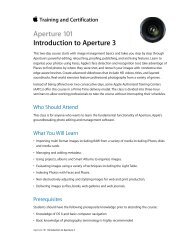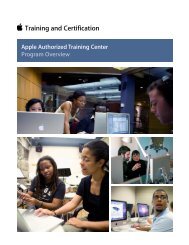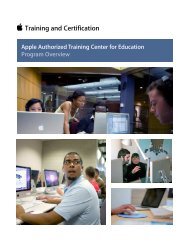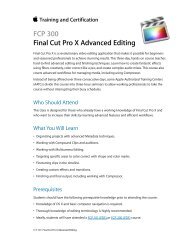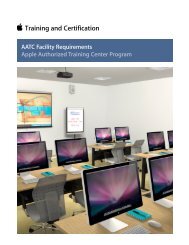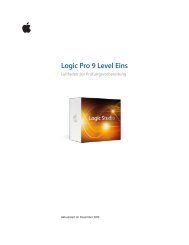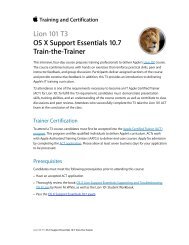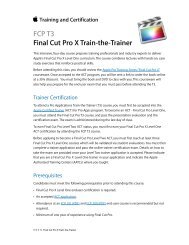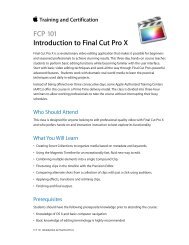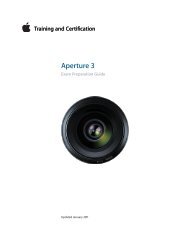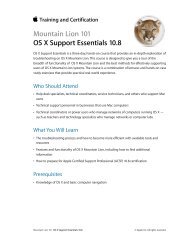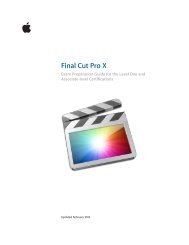OS X Support Essentials 10.8 - Training - Apple
OS X Support Essentials 10.8 - Training - Apple
OS X Support Essentials 10.8 - Training - Apple
You also want an ePaper? Increase the reach of your titles
YUMPU automatically turns print PDFs into web optimized ePapers that Google loves.
<strong>OS</strong> X <strong>Support</strong> <strong>Essentials</strong> <strong>10.8</strong> Exam Preparation Guide<br />
6. Forcing a rebuild of the Spotlight index databases is a<br />
common technique to resolve search issues. You can force a<br />
rebuild by adding an item to the Spotlight preferences<br />
Privacy list, and then removing the item. This deletes the<br />
current index database and forces the system to build a new<br />
one.<br />
Lesson Seventeen review questions<br />
After completing Lesson Seventeen, you should be able to answer the<br />
following questions.<br />
1. What type of file is created by the Finder when you select the<br />
Archive option?<br />
2. What action is set as the default for opening archive files?<br />
3. Which <strong>OS</strong> X application is responsible for the creation and<br />
management of disk images?<br />
4. Why would you use an archive file over a disk image? Why<br />
would you use a disk image over an archive file?<br />
Answers<br />
1. The Archive option in the Finder creates compressed zip<br />
archive files.<br />
2. By default on <strong>OS</strong> X, double-clicking a zip archive causes the<br />
system to expand the zip archive into a folder next to the<br />
same location as the original zip archive.<br />
3. Disk Utility is the primary application for creating and<br />
managing disk images.<br />
4. Archive files are much simpler to create in the Finder and are<br />
compatible with third-party operating systems. Disk images<br />
are more difficult to create and manage, but offer greater<br />
flexibility. Primarily, disk images can be easily modified and<br />
converted. However, <strong>OS</strong> X–style disk images aren’t<br />
compatible with third-party operating systems.<br />
Lesson Eighteen review questions<br />
After completing Lesson Eighteen, you should be able to answer the<br />
following questions.<br />
1. What backup destination disks does Time Machine support?<br />
2. How does Time Machine maintain a backup history of the file<br />
system?<br />
3. What types of files are omitted from Time Machine backups?<br />
4. Why is Time Machine inefficient at backing up large<br />
databases?<br />
5. Why might a previously backed-up item no longer be<br />
available in Time Machine?<br />
26



